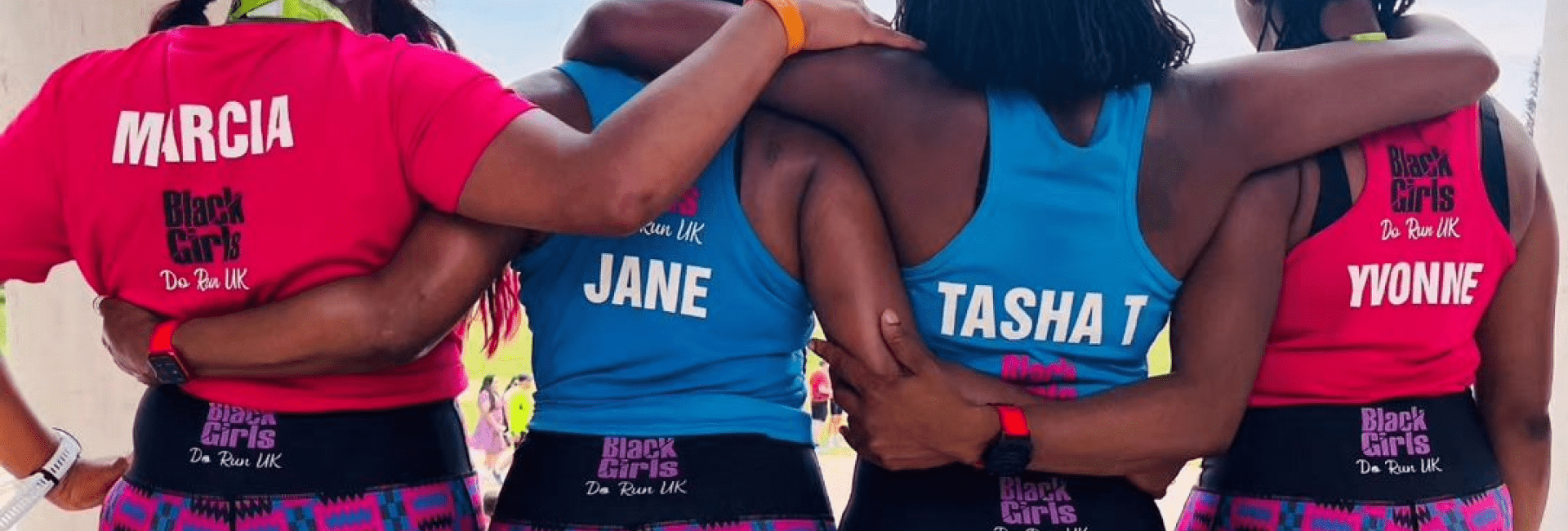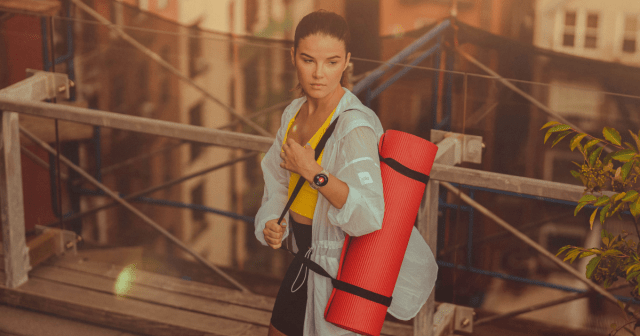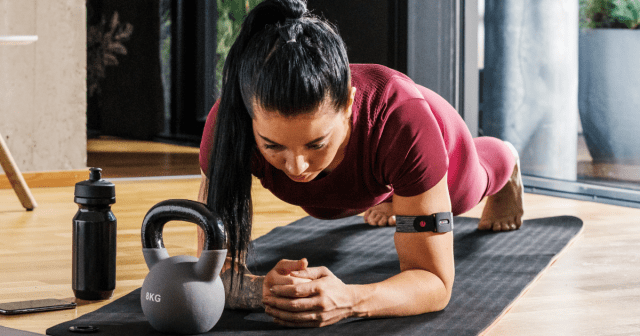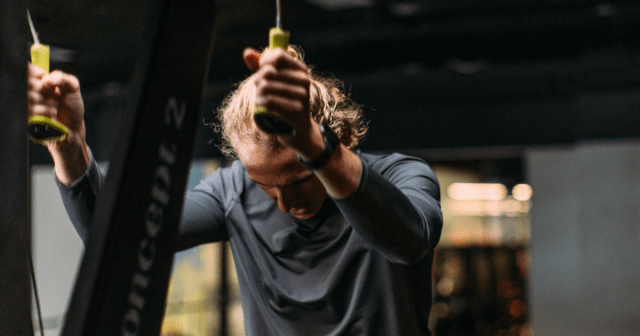“When we first started dating,” laughs Rachel, a removalist and CrossFit enthusiast, “Hilary tried for about six months to get me to train with her. But I was like, “No, CrossFit is awful. It’s like a cult.” Memories like this highlight how much has changed since Rachel first met her girlfriend and business partner, Hilary, in 2017. The couple now runs a women-led transport, removals, and storage company called The Female AdVANtage and have a shared passion (and occasional rivalry) in CrossFit. “Currently, I can’t even look at the 120 bar [for a deadlift],” quips Hilary. “I’m struggling on the 115, but Rachel’s like, “Yeah, I’ve probably got more in the tank.”
There’s a fun, competitive energy about the pair, who live in the English county of Wiltshire. Working and working out together provides the couple with a schedule that some might find grueling. “We generally go to a 7am CrossFit class,” notes Hilary. “But if we can’t make that because of work, then we’ll go to the one at 6am or 5:30.” Thankfully, they understand the importance of rest days, in their training at least. “We usually do five CrossFit sessions a week,” explains Rachel. “Then we try to have a day off during the week plus Sunday off, as well.”
For the uninitiated, CrossFit is a high-intensity training program that incorporates everyday, functional moves to build strength, stamina, and speed. Think gymnastics, weightlifting, and cardio combined into one training plan designed to encompass all areas of your physical fitness. It’s a workout regime that’s an ideal match for anyone whose job entails lifting furniture and boxes off the ground and then climbing endless amounts of stairs.
Main image credit: LPatts Photo
Progressing and learning
The couple initially met while working in the police force, a job you assume would be pretty active. In reality, it was surprisingly sedentary call center work. “You’d be doing 12-hour shifts sitting down,” recalls Hilary. “They allowed a five-minute break every hour just to get away from your screen. But you can’t do anything in five minutes.”
“I went into long-distance running and did a half marathon. After that, I was like, “Great. Done it. What now?” Then I found CrossFit.”
Such a career wasn’t a natural fit for Hilary, who always had energy to burn. “[As a teenager] I played pretty much any sport I could get my hands on. Foremost, I was a swimmer. And then that gave me really good fitness [which led] into cross-country running.” She followed this up with hockey, basketball, and karate before trying football at university. “Then I went into long-distance running and did a half marathon. After that, I was like, “Great. Done it. What now?” Then I found CrossFit.”
For Rachel, roller derby became her passion, and in Oxford’s city league, she was a fearsome opponent on four wheels. When Hilary finally convinced her to try CrossFit, Rachel figured that her overall fitness would put her in good stead. “I thought I’d walk in there and be pretty good at it. But I was not good,” laughs Rachel. “I went from being the fit person in my team and my group of friends to definitely not being the fit one [in our CrossFit class].” But she quickly found her feet and understood Hilary’s enthusiasm. “There were so many things to learn, which is why we love it now. You’re always progressing and learning something new.”
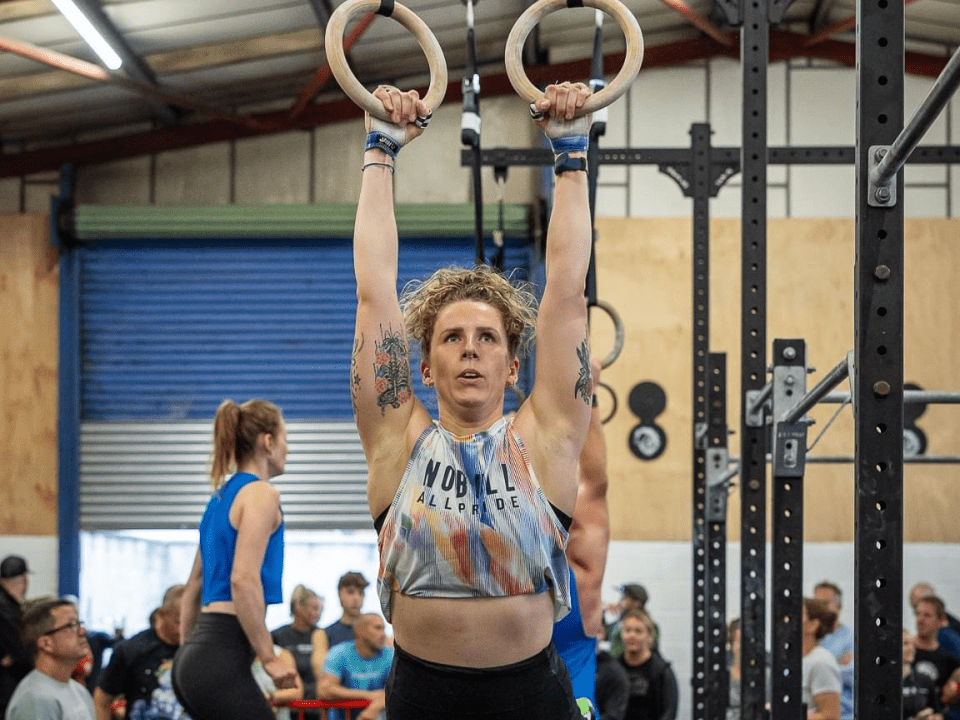
The perfect combination
In 2019, Rachel and Hilary decided to give up their jobs and head Down Under to explore Australia by driving around it together in a van. There, they entered Rachel’s first CrossFit competition – and won. “I knew how unusual first place was,” laughs Hilary. “But Rachel went into all of her future competitions being like, “I’ve won one, so…” It was a case of beginner’s luck which is yet to be repeated. “We’ve come 4th place a couple of times,” notes Rachel. “In my most recent competition, I came last,” Hilary chuckles. “Someone’s gotta do it.”
Like most people, the couple found 2020 to be a sudden and sizeable gear change. “When we traveled back from Australia during the COVID lockdown, we went from having such an incredible traveling lifestyle, dropping in at gyms and seeing incredible places, to being in my parent’s house in a village, unable to leave,” recalls Hilary. Without jobs and an income, they quickly realized they needed a plan.
“We love being outside and we love fitness. This is the perfect combination. Why have we never thought of being removalists?”
Some friends who run a small student removals company came to their rescue, offering the couple work. It turned out to be a light bulb moment for the pair. “We were like, “Yeah! We’ve been driving a van around [Australia], and we love being outside, and we love fitness. This is the perfect combination. Why have we never thought of being removalists?”
They were surprised by people’s reactions when they turned up to do the job, quickly realizing that their uniqueness could work in their favor. “People were like, “Oh, two women, in a van, moving stuff. This is great,” recalls Rachel. “They’d invite us in for cups of tea, and we were like, “We’re just doing our job.” They launched their own company a few months later.
But the question remained: would things really be that simple? Had CrossFit prepared them for the physical challenges of this profession? Would everyone be so accepting of two women working in an almost exclusively male industry?
A sofa is not a barbell
The first challenge turned out to be starting a company during the pandemic that required a high level of fitness. Not being able to train at the gym turned out to be a significant hindrance for the pair. “It was perhaps nine or ten months after we started doing removals that we started back doing CrossFit properly,” recalls Rachel. They’d found that despite their fitness level, the lack of regular training was affecting their work. “We just weren’t using our body in the right kind of way,” reflects Hilary. “There was no warm-up. We were sitting down in the van for hours at a time. So you can imagine going from there straight into lifting a heavy box. Our bodies couldn’t take the constant stress of it.”
The result was that they quickly developed physical issues in those early months. “I had a shoulder niggle, hip niggle, like all sorts,” notes Hilary. “It was getting me down because it’s an awkward job. Carrying a sofa is not like carrying a barbell. It’s lifting a heavy weight around a corner and up a set of stairs.” Starting CrossFit again quickly made a noticeable difference to their work. “We felt the difference with things that we pick up every day (like our trolleys and stuff on the back of the van),” remembers Rachel. “We were like, “Oh, these are actually starting to feel lighter now.”
Unfortunately, not everyone is as quick to recognize the couple’s apparent fitness outside the competitive arena. “Some men assume they’re stronger than us just because of our gender, even though half the time they’re just frail old guys,” notes Rachel. “We did have one potential customer, and he literally looked me up and down and went, “You’re quite small. How do you do this job?” And I was like, “Why did you call me then?”
Sometimes, people in their industry are just as quick to underestimate them. “We were doing a job at a storage unit a few months ago, and another removalist said to us “For the heavy stuff, you’re gonna need me,” Hilary recounts. “And I’m like, “What? Why?” He goes, “Because you’re women.” I was like, “Well, there you go.” The pair often struggle to find an effective way to respond to such assertions, but the sexism doesn’t go unnoticed by the public. “Afterward, his customer said, “I’m really sorry for the way that he behaved,” notes Hilary.
Playing it right
“Nobody weighs their sofa,” points out Hilary. “Nobody says, “My sofa weighs 120 kilos.” You don’t know until you pick it up.” Thankfully, their training means the couple can lift pretty much any household item that comes their way. “My max is 115, and Rachel’s max is 120,” notes Hilary. “So, I’m like right, 235 kilos is gonna be the most we’re able to lift.”
“My max is 115, and Rachel’s max is 120,” notes Hilary. “So, I’m like right, 235 kilos is gonna be the most we’re able to lift.”
Thankfully, being a removalist isn’t all heavy lifting. There’s a helpful synchronicity between the couple’s jobs and training sessions. “My favorite thing about CrossFit is probably when there’s a little bit of a mental game to it – and this probably applies to the removals a bit as well,” says Hilary. “You can win a workout because you’ve played it right. You’ve broken it up, held on at certain times, and rested at certain times. I think that that mental challenge keeps me interested. I don’t get bored of it because I’m like, “OK, how do I wanna do now?”
“I think that similarly, in removals, it’s the physicality plus the “Right, what needs to come onto the van next? How will that fit into the jigsaw puzzle I’ve made on the back of the van? And what about my weight limit and everything like that?” I like the strategy.”
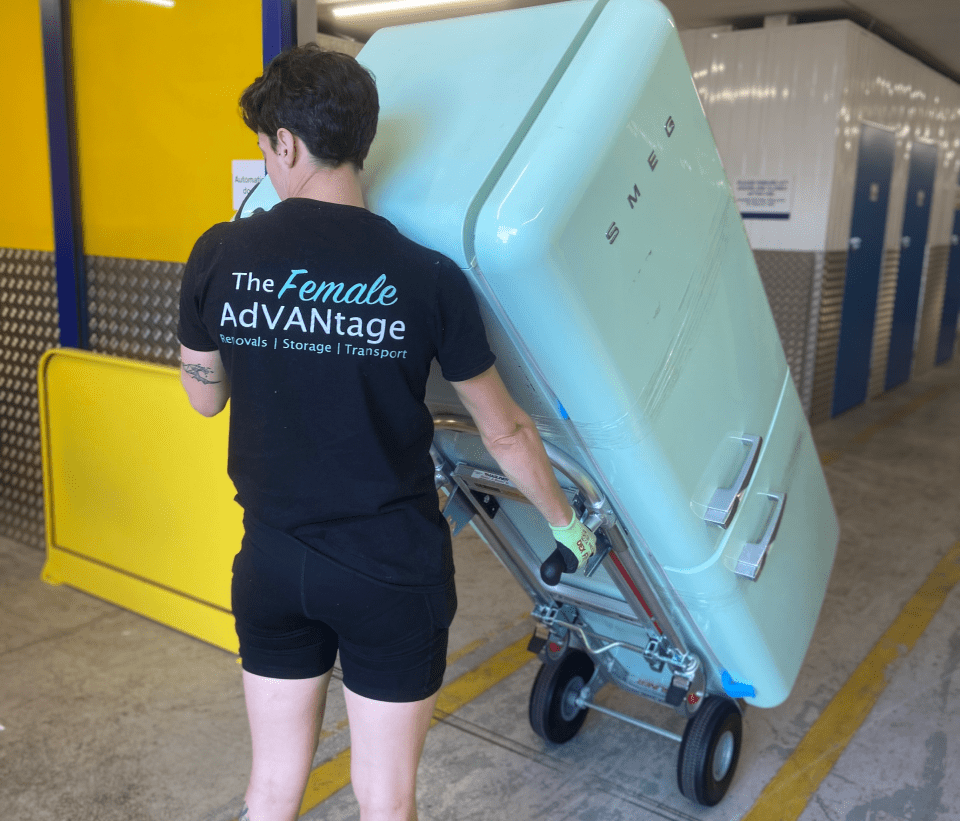
The Female Advantage
Recently, at the Rainhill Trials, a fitness competition that takes place each year in Manchester, the pair discovered one way their work had given them a surprising edge. “They had an odd object movement [section], which generally means moving sandbags,” explains Hilary. “There was one called a worm, which is a really elongated sandbag that a couple of people will try and maneuver.” As it turned out, some of the couple’s best finishes that day were in the odd object movement “because that’s our job,” points out Hilary. “When I placed eighth out of 50 in that one, my coach shouted at me, “And THAT’S the female advantage!”
“We know how heavy objects move well,” says Rachel. “We have spatial awareness because we’re throwing barbells over our heads [in CrossFit sessions], and we’ve got to catch them.”
The advantages that CrossFit gives them go beyond simple strength. “We know how heavy objects move well,” says Rachel. “We have spatial awareness because we’re throwing barbells over our heads [in CrossFit sessions], and we’ve got to catch them.” However, the pair are comfortable acknowledging how their physicality does impact how they do their job. “Sometimes, we have to do a little deadlift with straight arms, and then we have to do a small bicep curl, and that’s no mean feat when you’ve got 150 kilos of piano in your hands,” notes Hilary. “Whereas a six-foot-tall guy would be able to deadlift it up and have enough clearance underneath to move his feet.”
Team feeling
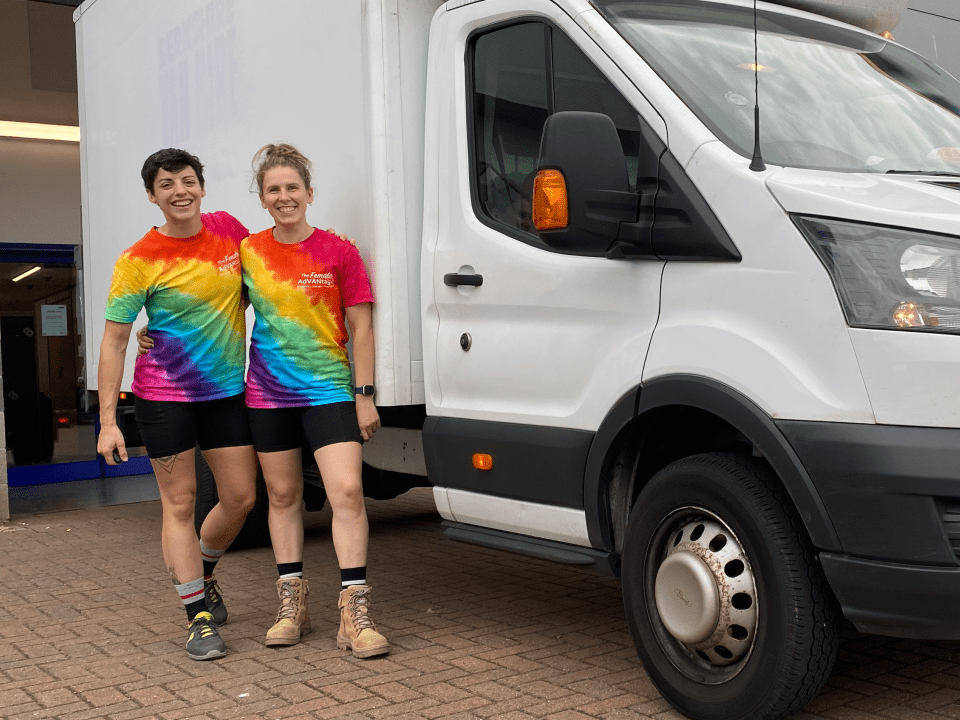
Living, working, and training together means the couple spends little time apart. “We go to CrossFit classes together because our days are so intertwined,” says Rachel, pointing out that their shared work leaves them with few alternatives. “People are like, “God, don’t you get sick of each other?” laughs Hilary. “But actually, when we go to the gym, we don’t talk to each other. We see our friends. Then, at the end, we see each other and are like, “How was that?”
“Everything hurts, and I’m sweaty, but I’ve had a really good conversation with about seven people.”
This community mentality of CrossFit helped Hilary find a way to be on a team that worked for her. “What is difficult about team sports is that they require a commitment every single week at a particular time – and sometimes, I’ve really struggled with that,” she points out. “I have my energy at 6am or 7am, but when it gets to 8pm, I don’t have any energy to give anymore.”
Being part of a team was also crucial to Rachel, who had relished being in the roller derby world. Together, the couple have found a way of training that gives them the squad goals they want. “With CrossFit, it has a real community and team kind of feeling,” notes Hilary. “It feels like you’re all in it together, and it’s really social. You’re like, “Everything hurts, and I’m sweaty, but I’ve had a really good conversation with about seven people.”
Looking forward
For someone who once thought CrossFit was a “cult,” Rachel is pretty invested in her training. “My goal for 2024 is to get my gymnastics up to speed with my lifting,” she explains. “Things like handstand pushups, bar muscle ups, and pull-ups. I want to become a bit more well-rounded at everything instead of having these obvious weaknesses.” Yet, as Hilary points out, her partner is hardly deficient. “In 2024, I want to try and get closer to Rachel’s deadlift [of 120] because it’s really good.”
They easily swap numbers of how much they can lift, showcasing the ways in which they slightly outdo each other. “Your clean is much better than mine,” Rachel tells Hilary. “My clean is 66 kilos and…” “My clean is 72,” finishes Hilary.
“By this time next year, I’d love to be able to squat 100,” says Rachel, setting her fitness goals. To which Hilary quips in admiration, “And by this time next year, I hope to squat 90.”
If you liked this post, don’t forget to share so that others can find it, too.
Or give it a thumbs up!
I like this article
Please note that the information provided in the Polar Blog articles cannot replace individual advice from health professionals. Please consult your physician before starting a new fitness program.

